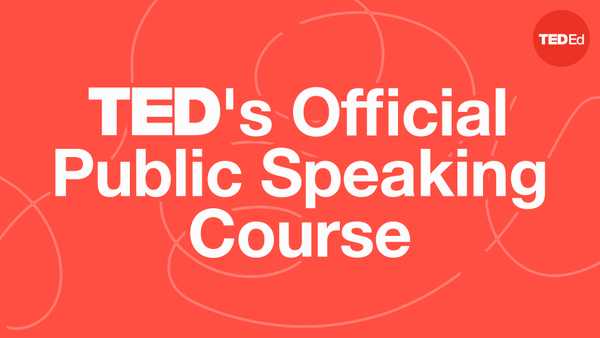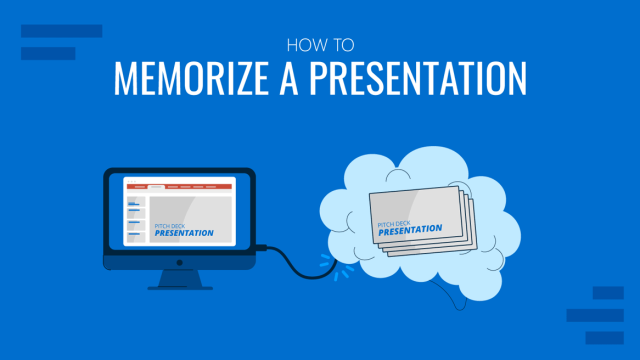Presenting with Confidence (Online)
How Great Leaders Craft and Deliver Persuasive Presentations That Sell Ideas, Inspire Teams, and Build Brands


Associated Schools

Harvard Graduate School of Design
What you'll learn.
Learn the unbreakable laws of communication that will make your next presentation engaging, attractive, and actionable.
Identify the most effective types of stories to connect with your audience.
Learn the science behind emotional, engaging, and persuasive storytelling.
Discover the three most important tactics for developing confident body language to help you present authentically in front of any type of audience.
Build a message map to pitch your idea in as little as 15 seconds (elevator pitch), or create the outline for a longer, well-crafted presentation.
Explore methods for how to make data instantly memorable.
Course description
Ideas are the currency of the 21st century. The ability to communicate your ideas persuasively is the single greatest skill you can learn to succeed in a globally competitive world. Through stories, videos and case examples, this program offers an actionable, step-by-step method anyone can adopt to create and deliver inspiring in-person or virtual presentations that are engaging, persuasive and memorable.
Key topics include: applying storytelling methods, creating presentation headlines, utilizing the rule of three, building multi-sensory experiences, making statistics instantly memorable, delivering authentic presentations with confidence, creating a message map around your story; learning practice methods for seamless delivery in-person or virtually. This online program includes an optional private one-on-one consultation via phone or remote video with the instructors following the program dates.
You may also like

Communication Strategies: Presenting with Impact
Gain the skills needed to engage, inform and inspire others — and improve your ability to communicate as a leader.

Negotiation Skills: Strategies for Increased Effectiveness
Enhance your ability to negotiate through effective techniques and skills.

Advanced Negotiation Skills
Develop sophisticated negotiation skills to create value for all parties at the bargaining table.
Join our list to learn more
TED’s Official Public Speaking Course
Master a variety of communication skills with TED’s official public speaking course, now available on YouTube Courses. This course will teach you how to identify, develop and share your best ideas with the world.

YouTube Courses are currently only available in the United States, but YouTube is working on expanding into other regions in 2023.
The proceeds from this course support TED-Ed's nonprofit mission of creating and distributing free, high-quality animations.
Master the art of public speaking
- Craft them into compelling narratives.
- Present so that people want to listen.
Become a better communicator
- Establish a connection with your listeners.
- Give more persuasive presentations.
- Explain complex ideas.
© 2024 TED Conferences, LLC. All rights reserved. Please note that the TED Talks Usage policy does not apply to this content and is not subject to our creative commons license.

What are you looking for?
The art of presenting, with simon sinek, usd $250.00 usd $175.00.
- Instructor: Simon Sinek
- Course Length: 90 minutes
- Skills: Communication, Leadership, Creativity
Ever since he gave his groundbreaking TED Talk on the concept of WHY—which went viral with more than 60 million views—Simon routinely gets asked for his secrets to effective public speaking. “So, I thought it would be fun to compile all the lessons, tips, and tricks I’ve learned over the years into one course so that others can learn them too,” he says. Whether you’re presenting on a stage, in a meeting, at a wedding, or simply to a group of friends, join Simon to discover how to present your ideas in a way that captivates others and makes them truly curious to hear what you have to say.
USD $250 USD $175

Proven Expertise
Developed and taught by renowned speaker and thought leader, Simon Sinek, who captivates diverse audiences around the globe.
Practical Application
This course offers actionable techniques and strategies, not just theory, to immediately enhance your presentation skills.
Comprehensive Content
Simon covers a wide range of presentation aspects ensuring a holistic approach to mastery so you’ll be prepared for any scenario.

Self-Paced Learning
Take control of your learning journey and progress at a speed that works for you with on-demand access for twelve months.
Are You Shopping on Behalf of Your Business or Organization?
Great! Connect with us today to empower your entire team with the skills to deliver captivating and effective presentations. Together, we’ll unlock their full potential!
Explore Simon’s Lessons
Would you like to learn Simon’s #1 rule for presenting? His method to captivate your audience right from the start? And his expert advice for preparing and outlining your presentation, while also being ready for the unexpected? In “The Art of Presenting,” Simon unveils these secrets and much more.

The Art of Presenting with Simon Sinek
Simon has given countless talks to audiences of all sizes for nearly two decades. If there’s one thing he’s learned, it’s that the true power of a presentation isn’t actually about the content. It's about the manner in which you present the content. Here he explains why.
Learn Simon’s #1 rule to deliver a great presentation, which will revolutionize your approach to any presentation or public-speaking gig.
Simon dives into the anatomy of a successful presentation and how to create a stress-free outline that will put you in a position to inspire.
Are you accompanying your presentation with visuals? Great! Learn Simon’s advice on what to include and what to avoid on your slides for maximum impact.
Simon shows how to prepare for your next presentation, including how to power through performance anxiety and how to adapt when things go wrong with your tech.
Simon gives pointers on how to kick off your presentation right: Make an entrance, make a statement, and lead with a compelling story.
OK, you’re now in front of your audience and ready to roll. Simon teaches you how to keep the momentum with your stage presence and delivery.
Remember how we said that things will go wrong? Well, we weren’t just talking about A/V issues. Simon gives advice on how to roll with the blunders and expect the unexpected.
Simon imparts some words of wisdom and explains his personal motivations for the course before sending you out to make an impact during your next presentation.
Learn to inspire through the screen: Simon provides some final wisdom on how to present for a virtual audience.

Meet Your Instructor
Simon Sinek is an unshakeable optimist and the founder of The Optimism Company. He believes in a bright future and our ability to build it together. Simon may be best known for his TED Talk on the concept of WHY, which has been viewed over 60 million times, and his video on millennials in the workplace—which reached 80 million views in its first week and has gone on to be seen hundreds of millions of times.
He continues to share inspiration through his bestselling books, including global bestseller Start with WHY and New York Times bestsellers Leaders Eat Last and The Infinite Game , as well as his podcast, A Bit of Optimism .
Like What You See?
Explore other life-changing products.

Find Your WHY
Embrace a purpose-driven life and discover your WHY.

How to Build Strong Relationships at Work
Cultivate better connections at work and in life and excel in team dynamics.

The Optimism Library
Immerse yourself in 50+ lessons from world-class instructors.
Pretty great actually—thanks so much for asking! We hope you’re having a great day as well.
It’s as easy as 1, 2, 3:
1. Sign in to your account 2. Click on My Learning Dashboard 3. Scroll down to My On-Demand Courses and select The Art of Presenting
Don’t worry, we’ve got you!
1. Head here to reset your password 2. Enter your email address (the one you used at checkout) 3. Check your email inbox for further instructions
These courses are designed to help you grow. If after registering and going through a couple of lessons you realize it’s not the right fit, no worries! We will provide you with a full refund within the first five days of trying the course and with less than 25% of the course completed. Just contact us here !
These courses are entirely on demand, so that you can move at your own pace, snack and stretch breaks included. You’ll have access to the content for the next 12 months.

Unleash Your Infinite Mindset
Quantity: 1 quantity = 1 team of up to 20 participants
Contact sales.
For teams of 20+ contact us
Teams of up to 20
Purchase: $999 $699.3, bundle & save: $838.6 save $560.
Buy Unleash Your Infinite Mindset and The Art of Building Fiercely Loyal Customers together for only $1,198 $838.6.
The Art of Creating Fiercely Loyal Customers

We fully agree, so we like to reward curiosity. Use code GETCURIOUS for 20% off your next purchase.
A spark is something quite small and, by itself, not very powerful. But a spark has the ability to ignite. An idea is like a spark; alone it is just a set of words, but it too can ignite. A great idea can inspire others to dream bigger. Let us all work together to ignite something greater than ourselves.
Let us all be a Spark of Optimism.


Best Presentation Skills Training
The ability to present your ideas confidently and persuasively is the single greatest skill you can learn to succeed in a globally competitive world. Here are the best Presentation Skills Training courses to you to help you achieve this.

What Makes an Effective Presentation?
Futurelearn.
On this course, you will have the opportunity to discuss the features of an effective presentation and investigate how to design and develop your own presentation. You will explore effective presentation techniques to help you evaluate and improve your presentation skills.
Course link: Learn more
Auther: Andrew Preshous

Presenting on Video (with Online Practice)
Virtualspeech.
Learn how to deliver successful video-based presentations on Zoom, Webex and more. Then you have the unique opportunity to practice, improve and build your confidence in our virtual presentation simulator.
Auther: Dom Barnard

High Impact Presentation
Dale carnegie.
Effective communication is critical in any role. Whether you are persuading colleagues, selling to a client, or energizing a team, the power of your presentation makes the difference between success and failure. This course teaches how to properly execute your presentation and stand out from the crowd.
Auther: Multiple
Seth Godin on Presenting to Persuade
Instead of focusing on the craft of making slides, Seth Godin takes you on a journey to understand what your presentation is actually for. He'll help you see that a presentation is a unique and powerful opportunity, a chance to be heard, a moment where you have the leverage to make something happen.
Auther: Seth Godin

Presenting Made Brilliant
Rada business.
This online course is an intensive, practical course that takes the focus away from what you present and instead focuses on how you present. You are taught how to build a confident and credible presence in highly pressured environments, how to open and close presentations convincingly, and more.
Auther: Jem Stein

Professional Business Presentations
This course discusses how to effectively create presentations with quality formatting, the proper design elements and organization. The learner will identify the proper presentation format and software for their audience.
Auther: Debora Sepich

The Art of Effective Presentations
Pluralsight.
Tell a story, engage the audience, leave them inspired. This course provides a roadmap for delivering effective presentations and motivating an audience through forming your message, designing visuals and demos, preparing for the unexpected, and effective delivery strategies.
Auther: John Papa
Presenting with Confidence
Learn how to present confidently to hook your audiences, stakeholders, and colleagues, keep them engaged and leave a lasting impression. Make an impact whether online or in-person.
Auther: Gagan Singh

Design Better Presentations
Creativelive.
This class will teach you basic design principles you can apply to your presentation decks. You’ll learn how to work with type, color and image and lay out information with confidence. You’ll also Identify what type of presenter you are and design your presentation to support this.
Auther: Lara McCormick

Establishing Credibility as a Speaker
Linkedin learning.
Audiences will assess the credibility of presenters before they even begin speaking. In this course, Laura Bergells shares techniques that help speakers develop personal credibility. She shows you how to earn the attention and interest of your audience right away by using key nonverbal and emotional skills.
Auther: Laura Bergells

HARVARD UNIVERSITY
Through stories, videos and case examples, this program offers an actionable, step-by-step method anyone can adopt to create and deliver inspiring in person or virtual presentations that are engaging, persuasive and memorable.
Auther: Carmine Gallo

Mastering Presentation Design
Taking the time to customize decks to match an audience's style or to fit the mood of the project will set the best possible stage for your ideas or offer. You’ll learn step-by-step how to research visual styles, source free high-quality images and fonts, create strong layouts, customize slides to sell your ideas or project, and lots more.
Auther: Lara Evens
Data Analysis and Presentation Skills: the PwC Approach
Explore how a combination of better understanding, filtering, and application of data can help you solve problems faster - leading to smarter and more effective decision-making. You'll learn how to present data to others in a way that gets them engaged in your story and motivated to act.
Auther: Alex Mannella
Communication Skills and Teamwork
Effective writing and presentation skills are essential for career success. Learn how to create and deliver high-impact communications, improve your soft skills, and effectively lead and collaborate on teams.
Auther: Jim Pautz

Designing a Presentation
In this course, designer Tony Harmer takes you through the essentials of presentation design to give you the tools you'll find most useful in thinking about, designing, and building successful presentations. Tony covers a variety of key topics, including mood boards, layout, color considerations, type, graphics and images, charts, transitions, and animations.
Auther: Tony Harmer
High-Impact Presentations (with Online Practice)
High-stakes presentations require more than just basic presentation skills. They require professional-level delivery techniques and the confidence to deliver at the highest level in any business setting. This course teaches you how to execute important presentations, which you can then practice in interactive exercises.
Auther: Julian Mayhew
Become a confident public speaker and deliver engaging presentations. Learn tools to overcome self-doubt so you can build your confidence, strategies to create your content, performance techniques to help you stay grounded and calm, and more.
Auther: Cherokee Lebon
- SUGGESTED TOPICS
- The Magazine
- Newsletters
- Managing Yourself
- Managing Teams
- Work-life Balance
- The Big Idea
- Data & Visuals
- Reading Lists
- Case Selections
- HBR Learning
- Topic Feeds
- Account Settings
- Email Preferences
What It Takes to Give a Great Presentation
- Carmine Gallo

Five tips to set yourself apart.
Never underestimate the power of great communication. It can help you land the job of your dreams, attract investors to back your idea, or elevate your stature within your organization. But while there are plenty of good speakers in the world, you can set yourself apart out by being the person who can deliver something great over and over. Here are a few tips for business professionals who want to move from being good speakers to great ones: be concise (the fewer words, the better); never use bullet points (photos and images paired together are more memorable); don’t underestimate the power of your voice (raise and lower it for emphasis); give your audience something extra (unexpected moments will grab their attention); rehearse (the best speakers are the best because they practice — a lot).
I was sitting across the table from a Silicon Valley CEO who had pioneered a technology that touches many of our lives — the flash memory that stores data on smartphones, digital cameras, and computers. He was a frequent guest on CNBC and had been delivering business presentations for at least 20 years before we met. And yet, the CEO wanted to sharpen his public speaking skills.
- Carmine Gallo is a Harvard University instructor, keynote speaker, and author of 10 books translated into 40 languages. Gallo is the author of The Bezos Blueprint: Communication Secrets of the World’s Greatest Salesman (St. Martin’s Press).

Partner Center

- Call Today 301-938-6990
Executive Presence: The Secret Sauce That Powers It Price of Business Podcast
Powerful Public Speaking and Presentation Skills
Presentation / Media / speech coaching
THE PINCUS GROUP: EFFECTIVE PRESENTATION TRAINING FOR EVERY EXECUTIVE LEVEL
Our executive presentation training is designed to help you quickly identify and unlock your individual strength as a presenter. We build confident communicators in individual or group sessions, helping you to deliver the powerful messages you need to motivate and move others to action. Our experienced coaches will expertly guide you towards peak performance in whatever presentation or briefing formats you use. Whether delivering persuasive communications in the boardroom, high stakes client or investor presentations, industry appearances, internal briefings or even offering legislative testimony, our experts will guide you into powering up your professional communications. Using video-taped, highly interactive exercises and personalized feedback sessions, you’ll be coached by those who’ve been there through rounds of practice. You’ll gain confidence while learning valuable techniques to help you meet even your most challenging communications.
Power up your executive presence in ways that connect with your target audiences, all while maintaining authenticity and relatability.
If you or your team deliver sales presentations, keynotes, seek to inspire team members, or brief clients and partners, we’ll help you present at your best. Call today The Pincus Group for a free consultation, and power up all of your professional communications with the presentation training company.

Presentations That Stand Out
The Pincus Group will help you turn ordinary presentations into extraordinary opportunities. Our expert presentation skills training focuses on helping you identify and build on your professional communication strengths, guiding you to use those strengths to connect with your target audiences. Powerful and memorable presentations aren’t solely about the content presented, or even about the presenter’s knowledge of that content. Mere data isn’t likely to inspire, motivate, or move a target audience to a desired outcome on its own. That takes dynamic presenters, knowing just how to connect with their audiences, whether it be an audience of one or thousands, in a boardroom, during a remote presentation, or face to face with an audience in an auditorium. Our expert trainers build authentic and powerful communicators, one professional at a time. Working with a Pincus Group coach means you’ll build the skills you need to deliver powerfully effective presentations each and every time. You’ll power up everything from your non-verbal skills like tone, pacing, body language and inflection, to your verbal power, story-telling and persuasive abilities, and deliver it all displaying the kind of executive presence every organization values. Whether you’re hoping to polish and professionalize your team’s efforts, or building specific skills for individuals, The Pincus Group is your partner in achieving your goals. Our expert coaches have been on the front lines helping thousands of executives in the public and private sector successfully build powerfully effective communicators, who can engage their target audiences and produce real results for their organizations.
We at The Pincus Group, understand these communication skills have less to do with your title and more to do with effective, guided training at the hands of an expert professional. Many simply have had to learn professional communication skills the hard way, through trial and error, or by trying to emulate someone else. Delivering powerful presentations and briefings every time in every venue takes learning what works for you through targeted and effective feedback, exactly the value our clients receive from our coaches. In today’s competitive workplace, those who can communicate powerfully with others, who can explain, enlighten and even influence others through communication, stand out. Our training builds powerfully effective communicators who are authentic, confident presenters in every venue, no matter the challenge.
Whether you’re a seasoned presenter looking for new ways to elevate your performance, or a professional who’s been given a new, higher profile role and want to be sure you’re ready for the challenge, our coaches will expertly prepare you for success. Call or email today for a free evaluation and start your journey toward powerfully effective communications.
THE BEST PRESENTATION SKILLS TRAINING FOR YOUR CORPORATE SUCCESS
Executive presence, real presentation skill and powerful communications don’t always correlate to experience, position or title. As responsibilities and roles change, so do demands on professionals to communicate powerfully, concisely and memorably to others. Hiring managers look for those who cannot only understand and work through the challenges they’re given, but who can also communicate that information to others up and down the chain of command. No matter what the role, position or job description, those professionals who can effectively present and communicate to those inside and outside their sphere of knowledge are priceless. Regardless of title, effective communication is a professional success marker that’s highly valued in every organization.

That’s why those familiar with boardrooms and even those who’ve never set foot in one, need to be powerfully effective communicators. Whether you’re the one briefing decision-makers or hoping to become one, powerfully effective communication tools are an essential piece of the skill set that will get you there. Those tools can be quickly gained and deepened through hands-on guidance by our expert coaches. As a presentation training company, we match the right coach with the right agenda to help organizations and individuals identify and then power up their unique strengths as communicators. Our goal is to help professionals make sure those strengths are obvious to everyone watching and listening to them. Every Pincus Group client is unique and every agenda is uniquely crafted to ensure success. We also stay committed to our clients’ success through our unique included coach on call service, designed to make sure our clients have continued support.
Powerful communicators aren’t born, they’re made, and we’re here to help you unleash your potential. Call The Pincus Group today for a free consultation on presentation skills training so you can begin your journey toward powerfully effective communications today.
training programs

Our Services

High Stakes Presentation Skills Training
Solid presentation skills are an asset to every business, but they’re crucial for successful businesses at key junctures. If your organization or team presents to regulators, lawmakers, or investors, you know these high-stake communications can lead to make-or-break decisions. Leveraging these moments to best advantage can’t be left to chance. Not every employee with the right subject knowledge is effective at communicating that knowledge to key stakeholders, especially under pressure. When every single member of your team must be at their best, it’s time to bring in the best professionally guided presentation coaching. We work with individuals and teams at the highest levels to make sure they’re individually and collectively ready for the spotlight, whether they’re key note speakers, part of a team delivering oral bids, testifying in public forums, answering investor questions, or dealing with state or federal regulators and lawmakers, our coaches ready them for success when it counts most. When confident communications are a must, turn to the pros at The Pincus Group to give you and your team the competitive edge you need.

High Stakes Media Training
Seizing the moment to make the most out of every media opportunity doesn’t happen by chance. The Pincus Group expertly readies newsmakers, elected officials, public figures, and executives of all stripes to pro-actively build reputations for themselves and their organizations. We guide both veterans and newcomers to the interview process with immediately applicable skills to apply in all kinds of venues; live TV, radio, internet and traditional print mediums. We’ll get you or your team ready to shine in every interview, no matter the industry or subject. We even ready clients facing hostile questions in challenging high stakes circumstances. If you or your team is in the spotlight, we’re here to help build confident communicators that help turn every opportunity into a win. Make the most out of your next media interview. Call the pros at The Pincus Group to make sure you are at your confident best for every media appearance.

Your message is your story. Messages help you communicate your story in a way your audience can hear and remember. When they are effective, messages help set you apart and persuade others at the same time. Finding the right message is crucial to effective communication. Combined with presentation skills training that help you deliver those messages effectively, they are the cornerstone of your communications,. Keeping your messages effective as time and circumstances change, is as important as making sure those within your organization are consistently communicating them. harder. At TPG, our experts can help you cut through the noise to effectively reach your target audiences each and every time. We’ll make sure your messages are clear, consistent and credible. Call us for a free consultation today, and start matching the power of your communication to the power of your ideas.
Communications Experts media training
Nothing guarantees success the way effective communication can. And no one delivers communications training more effectively than The Pincus Group.
Communications and media training are what we’re passionate about. Communications success for each and every client is what we’re committed to. We come by our unique expertise the old fashioned way … we’ve earned it. All of our senior trainers gained their expertise on the front lines of communications as former national and local reporters, with decades of experience asking the questions and writing the stories you’ve heard, read, and seen. We combine that unique experience with expertise gained on the other side of the communications spectrum. We’ve worked as senior political advisors, corporate communication executives, speech writers, and public speakers.

Meet Our Team

Aileen Pincus

David Burnett

James Adams

Gina London
Frequently asked questions, get in touch with us, remote coaching now available.

Coaches providing Media Training, Speech Training and Crisis Communications Training for individuals and groups presenting in any public forum. Media Training and customized for print and/or broadcast media, local, regional or national media. Media Training, Speech Training and Crisis Communication training conducted on client site or at The Pincus Group training facilities in Washington DC. luctus nec ullamcorper mattis, pulvinar dapibus leo.
- Email: info@thepincusgroup

©2021 pincusgroup.com, All Rights Reserved.
Automated page speed optimizations for fast site performance
Home Blog Education Presentation Skills 101: A Guide to Presentation Success
Presentation Skills 101: A Guide to Presentation Success
Getting the perfect presentation design is just a step toward a successful presentation. For the experienced user, building presentation skills is the answer to elevating the power of your message and showing expertise on any subject. Still, one can ask: is it the same set of skills, or are they dependable on the type of presentation?
In this article, we will introduce the different types of presentations accompanied by the skillset required to master them. The purpose, as always, is to retain the audience’s interest for a long-lasting and convincing message.

Table of Contents
The Importance of Presentation Skills
Persuasive presentations, instructional presentations, informative presentations, inspirational presentations, basic presentation skills, what are the main difficulties when giving a presentation, recommendations to improve your presentation skills, closing statement.
Effective communication is the answer to reaching business and academic goals. The scenarios in which we can be required to deliver a presentation are as diverse as one can imagine. Still, some core concepts apply to all presentations.
We define presentation skills as a compendium of soft skills that directly affect your presentation performance and contribute to creating a great presentation. These are not qualities acquired by birth but skills you ought to train and master to delve into professional environments.
You may ask: is it really that evident when a presenter is not prepared? Here are some common signs people can experience during presentations:
- Evasive body language: Not making eye contact with the audience, arms closed tightly to the body, hands in pockets all the time.
- Lack of interest in the presenter’s voice: dull tone, not putting an effort to articulate the topics.
- Doubting when asked to answer a question
- Irksome mood
The list can go on about common presenter mistakes , and most certainly, it will affect the performance of any presented data if the lack of interest by the presenter is blatantly obvious. Another element to consider is anxiety, and according to research by the National Institute of Mental Health, 73% of the population in the USA is affected by glossophobia , which is the fear of public speaking, judgment, or negative evaluation by other people.
Therefore, presentation skills training is essential for any business professional who wants to achieve effective communication . It will remove the anxiety from presentation performance and help users effectively deliver their message and connect with the audience.
Archetypes of presentations
Persuasive presentations aim to convince the audience – often in short periods – to acquire a product or service, adhere to a cause, or invest in a company. For business entrepreneurs or politicians, persuasive presentations are their tool for the trade.
Unless you aim to be perceived as an imposter, a proper persuasive presentation has the elements of facts, empathy, and logic, balanced under a well-crafted narrative. The central pillar of these presentations is to identify the single factor that gathered your audience: it could be a market need, a social cause, or a revolutionary concept for today’s society. It has to be something with enough power to gather critiques – both good and bad.
That single factor has to be backed up by facts. Research that builds your hypothesis on how to solve that problem. A deep understanding of the target audience’s needs , concerns, and social position regarding the solution your means can offer. When those elements are in place, building a pitch becomes an easy task.
Graphics can help you introduce information in a compelling format, lowering the need for lengthy presentations. Good presentation skills for persuasive presentations go by the hand of filtering relevant data and creating the visual cues that resonate with what your audience demands.
One powerful example of a persuasive presentation is the technique known as the elevator pitch . You must introduce your idea or product convincingly to the audience in a timeframe between 30 seconds and less than 2 minutes. You have to expose:
- What do you do
- What’s the problem to solve
- Why is your solution different from others
- Why should the audience care about your expertise

For that very purpose, using engaging graphics with contrasting colors elevates the potential power of your message. It speaks professionalism, care for details, and out-of-the-box thinking. Knowing how to end a presentation is also critical, as your CTAs should be placed with care.
Therefore, let’s resume the requirements of persuasive presentations in terms of good presentation skills:
- Identifying problems and needs
- Elaborating “the hook” (the element that grabs the audience’s attention)
- Knowing how to “tie” your audience (introducing a piece of information related to the hook that causes an emotional impact)
- Broad knowledge of body language and hand gestures to quickly convey your message
- Being prepared to argue a defense of your point of view
- Handling rejection
- Having a proactive attitude to convert opportunities into new projects
- Using humor, surprise, or personal anecdotes as elements to sympathize with the audience
- Having confidence
- Be able to summarize facts and information in visually appealing ways

You can learn more about persuasive presentation techniques by clicking here .
In the case of instructional presentations, we ought to differentiate two distinctive types:
- Lecture Presentations : Presentations being held at universities or any other educative institution. Those presentations cover, topic by topic, and the contents of a syllabus and are created by the team of teachers in charge of the course.
- Training Presentations : These presentations take place during in-company training sessions and usually comprise a good amount of content that is resumed into easy-to-take solutions. They are aimed to coach employees over certain topics relevant to their work performance. The 70-20-10 Model is frequently used to address these training situations.
Lecture presentations appeal to the gradual introduction of complex concepts, following a structure set in the course’s syllabus. These presentations often have a similar aesthetic as a group of professors or researchers created to share their knowledge about a topic. Personal experience does tell that course presentations often rely on factual data, adequately documented, and on the theoretical side.
An example of a presentation that lies under this concept is a Syllabus Presentation, used by the teaching team to introduce the subject to new students, evaluation methods, concepts to be learned, and expectations to pass the course.

On the other hand, training presentations are slide decks designed to meet an organization’s specific needs in the formal education of their personnel. Commonly known as “continuous education,” plenty of companies invest resources in coaching their employees to achieve higher performance results. These presentations have the trademark of being concise since their idea is to introduce the concepts that shall be applied in practice sessions.
Ideally, the training presentations are introduced with little text and easy-to-recognize visual cues. Since the idea is to summarize as much as possible, these are visually appealing for the audience. They must be dynamic enough to allow the presenter to convey the message.

Those key takeaways remind employees when they revisit their learning resources and allow them to ruminate on questions that fellow workers raise.
To sum up this point, building presentation skills for instructional presentations requires:
- Ability to put complex concepts into simpler words
- Patience and a constant learning mindset
- Voice training to deliver lengthy speeches without being too dense
- Ability to summarize points and note the key takeaways
- Empathizing with the audience to understand their challenges in the learning process

The informative presentations take place in business situations, such as when to present project reports from different departments to the management. Another potential usage of these presentations is in SCRUM or other Agile methodologies, when a sprint is completed, to discuss the advance of the project with the Product Owner.
As they are presentations heavily dependent on data insights, it’s common to see the usage of infographics and charts to express usually dense data in simpler terms and easy to remember.

Informative presentations don’t just fall into the business category. Ph.D. Dissertation and Thesis presentations are topics that belong to the informative presentations category as they condense countless research hours into manageable reports for the academic jury.

Since these informational presentations can be perceived as lengthy and data-filled, it is important to learn the following professional presentation skills:
- Attention to detail
- Be able to explain complex information in simpler terms
- Creative thinking
- Powerful diction
- Working on pauses and transitions
- Pacing the presentation, so not too much information is divulged per slide

The leading inspirational platform, TEDx, comes to mind when talking about inspirational presentations. This presentation format has the peculiarity of maximizing the engagement with the audience to divulge a message, and due to that, it has specific requirements any presenter must meet.
This presentation format usually involves a speaker on a stage, either sitting or better standing, in which the presenter engages with the audience with a storytelling format about a life experience, a job done that provided a remarkable improvement for society, etc.

Empathizing with the audience is the key ingredient for these inspirational presentations. Still, creativity is what shapes the outcome of your performance as people are constantly looking for different experiences – not the same recipe rephrased with personal touches. The human factor is what matters here, way above data and research. What has your experience to offer to others? How can it motivate another human being to pursue a similar path or discover their true calling?
To achieve success in terms of communication skills presentation, these inspirational presentations have the following requirements:
- Focus on the audience (engage, consider their interests, and make them a part of your story)
- Putting ego aside
- Creative communication skills
- Storytelling skills
- Body language knowledge to apply the correct gestures to accompany your story
- Voice training
- Using powerful words

After discussing the different kinds of presentations we can come across at any stage of our lives, a group of presentation skills is standard in any type of presentation. See below what makes a good presentation and which skills you must count on to succeed as a presenter.
Punctuality
Punctuality is a crucial aspect of giving an effective presentation. Nothing says more about respect for your audience and the organization you represent than delivering the presentation on time . Arriving last minute puts pressure on the tech team behind audiovisuals, as they don’t have enough preparation to test microphones, stage lights, and projector settings, which can lead to a less powerful presentation Even when discussing presentations hosted in small rooms for a reduced audience, testing the equipment becomes essential for an effective presentation.
A solution for this is to arrive at least 30 minutes early. Ideally, one hour is a sweet spot since the AV crew has time to check the gear and requirements for your presentation. Another benefit of this, for example, in inspirational presentations, is measuring the previous presenter’s impact on the audience. This gives insights about how to resonate with the public, and their interest, and how to accommodate your presentation for maximum impact.
Body Language
Our bodies can make emotions transparent for others, even when we are unaware of such a fact. Proper training for body language skills reduces performance anxiety, giving the audience a sense of expertise about the presented topic.
Give your presentation and the audience the respect they deserve by watching over these potential mistakes:
- Turning your back to the audience for extended periods : It’s okay to do so when introducing an important piece of information or explaining a graph, but it is considered rude to give your back to the audience constantly.
- Fidgeting : We are all nervous in the presence of strangers, even more, if we are the center of attention for that moment. Instead of playing with your hair or making weird hand gestures, take a deep breath to center yourself before the presentation and remember that everything you could do to prepare is already done. Trust your instincts and give your best.
- Intense eye contact : Have you watched a video where the presenter stared at the camera the entire time? That’s the feeling you transmit to spectators through intense eye contact. It’s a practice often used by politicians to persuade.
- Swearing : This is a no-brainer. Even when you see influencers swearing on camera or in podcasts or live presentations, it is considered an informal and lousy practice for business and academic situations. If you have a habit to break when it comes to this point, find the humor in these situations and replace your swear words with funny alternatives (if the presentation allows for it).
Voice Tone plays a crucial role in delivering effective presentations and knowing how to give a good presentation. Your voice is a powerful tool for exposing your ideas and feelings . Your voice can articulate the message you are telling, briefing the audience if you feel excited about what you are sharing or, in contrast, if you feel the presentation is a burden you ought to complete.
Remember, passion is a primary ingredient in convincing people. Therefore, transmitting such passion with a vibrant voice may help gather potential business partners’ interest.
But what if you feel sick prior to the presentation? If, by chance, your throat is sore minutes before setting foot on the stage, try this: when introducing yourself, mention that you are feeling a bit under the weather. This resonates with the audience to pay more attention to your efforts. In case you don’t feel comfortable about that, ask the organizers for a cup of tea, as it will settle your throat and relax your nerves.
Tech Skills
Believe it or not, people still feel challenged by technology these days. Maybe that’s the reason why presentation giants like Tony Robbins opt not to use PowerPoint presentations . The reality is that there are plenty of elements involved in a presentation that can go wrong from the tech side:
- A PDF not opening
- Saving your presentation in a too-recent PowerPoint version
- A computer not booting up
- Mac laptops and their never-ending compatibility nightmare
- Not knowing how to change between slides
- Not knowing how to use a laser pointer
- Internet not working
- Audio not working
We can come up with a pretty long list of potential tech pitfalls, and yet more than half of them fall in presenters not being knowledgeable about technology.
If computers aren’t your thing, let the organization know about this beforehand. There is always a crew member available to help presenters switch between slides or configure the presentation for streaming. This takes the pressure off your shoulders, allowing you to concentrate on the content to present. Remember, even Bill Gates can get a BSOD during a presentation .
Presentations, while valuable for conveying information and ideas, can be daunting for many individuals. Here are some common difficulties people encounter when giving presentations:
Public Speaking Anxiety
Glossophobia, the fear of public speaking, affects a significant portion of the population. This anxiety can lead to nervousness, trembling, and forgetfulness during a presentation.
Lack of Confidence
Many presenters struggle with self-doubt, fearing that they may not be knowledgeable or skilled enough to engage their audience effectively.
Content Organization
Organizing information in a coherent and engaging manner can be challenging. Presenters often grapple with how to structure their content to make it easily digestible for the audience. Artificial Intelligence can help us significantly reduce the content arrangement time when you work with tools like our AI Presentation Maker (made for presenters by experts in presentation design).
Audience Engagement
Keeping the audience’s attention and interest throughout the presentation can be difficult. Distractions, disengaged attendees, or lack of interaction can pose challenges.
Technical Issues
Technology glitches, such as malfunctioning equipment, incompatible file formats, or poor internet connectivity, can disrupt presentations and increase stress.
Time Management
Striking the right balance between providing enough information and staying within time limits is a common challenge. Going over or under the allotted time can affect the effectiveness of the presentation.
Handling Questions and Challenges
Responding to unexpected questions, criticism, or challenges from the audience can be difficult, especially when presenters are unprepared or lack confidence in their subject matter.
Visual Aids and Technology
Creating and effectively using visual aids like slides or multimedia can be a struggle for some presenters. Technical competence is essential in this aspect.
Language and Articulation
Poor language skills or unclear articulation can hinder effective communication. Presenters may worry about stumbling over words or failing to convey their message clearly.
Maintaining appropriate and confident body language can be challenging. Avoiding nervous habits, maintaining eye contact, and using gestures effectively requires practice.
Overcoming Impersonal Delivery
In virtual presentations, maintaining a personal connection with the audience can be difficult. The absence of face-to-face interaction can make it challenging to engage and read the audience.
Cultural and Diversity Awareness
Presenting to diverse audiences requires sensitivity to cultural differences and varying levels of familiarity with the topic.
In this section, we gathered some tips on how to improve presentation skills that can certainly make an impact if applied to your presentation skills. We believe these skills can be cultivated to transform into habits for your work routine.
Tip #1: Build a narrative
One memorable way to guarantee presentation success is by writing a story of all the points you desire to cover. This statement is based on the logic behind storytelling and its power to connect with people .
Don’t waste time memorizing slides or reading your presentation to the audience. It feels unnatural, and any question that diverts from the topic in discussion certainly puts you in jeopardy or, worse, exposes you as a fraud in the eyes of the audience. And before you ask, it is really evident when a presenter has a memorized speech.
Build and rehearse the presentation as if telling a story to a group of interested people. Lower the language barrier by avoiding complex terms that maybe even you aren’t fully aware of their meaning. Consider the ramifications of that story, what it could lead to, and which are the opportunities to explore. Then, visualize yourself giving the presentation in a natural way.
Applying this technique makes the presentation feel like second nature to you. It broadens the spectrum in which you can show expertise over a topic or even build the basis for new interesting points of view about the project.
Tip #2: Don’t talk for more than 3 minutes per slide
It is a common practice of presenters to bombard the audience with facts and information whilst retaining the same slide on the screen. Why can this happen? It could be because the presenter condensed the talk into very few slides and preferred to talk. The reality is that your spectators won’t retain the information you are giving unless you give visual cues to help that process.
Opt to prepare more slides and pace your speech to match the topics shown on each slide. Don’t spend more than 3 minutes per slide unless you have to introduce a complex piece of data. Use visual cues to direct the spectators about what you talk about, and summarize the principal concepts discussed at the end of each section.
Tip #3: Practice meditation daily
Anxiety is the number one enemy of professional presenters. It slowly builds without you being aware of your doubts and can hinder your performance in multiple ways: making you feel paralyzed, fidgeting, making you forget language skills or concepts, affecting your health, etc.
Meditation is an ancient practice taken from Buddhist teachings that train your mind to be here in the present. We often see the concepts of meditation and mindfulness as synonyms, whereas you should be aware that meditation is a practice that sets the blocks to reach a state of mindfulness. For presenters, being in the here and now is essential to retain focus, but meditation techniques also teach us to control our breathing and be in touch with our body signals when stress builds up.
The customary practice of meditation has an impact on imagination and creativity but also helps to build patience – a skill much needed for connecting with your audience in instructional presentations.
Having the proper set of presentation skills can be quite subjective. It goes beyond presentation tips and deepens into how flexible we can be in our ability to communicate ideas.
Different presentations and different audiences shape the outcome of our efforts. Therefore, having a basic understanding of how to connect, raise awareness, and empathize with people can be key ingredients for your career as a presenter. A word of advice: success doesn’t happen overnight. It takes dedication and patience to build communication skills . Don’t condition your work to believe you will be ready “someday”; it’s best to practice and experience failure as part of the learning process.
Like this article? Please share
Business Presentations, Presentation Approaches, Presentation Skills Filed under Education
Related Articles

Filed under Business • July 24th, 2024
How to Create a Demo Presentation
Discover the secrets behind successful demo presentations and what they should contain with this article. Recommended PPT templates included.

Filed under Presentation Ideas • July 17th, 2024
How to Convert a Text Document into a Presentation with AI
One of the biggest challenges for presenters is to summarize content from lengthy reports, academic papers, or any other kind of written media in an informative and concise way. Rather than losing countless hours going over and over the same text, we can speed up the process thanks to the virtues of artificial intelligence. In […]

Filed under Education • July 10th, 2024
How to Memorize a Presentation: Guide + Templates
Become a proficient presenter by mastering the art of how to memorize a presentation. Nine different techniques + PPT templates here.
Leave a Reply
We're sorry but you will need to enable Javascript to access all of the features of this site.
Stanford Online
Pitch perfect: mastering the startup presentation deck.
Stanford Continuing Studies
Startups try to project innovation, but many still use dated presentation formats for pitch decks. These paint-by-numbers templates are incongruent with the unique and disruptive approaches on which startups pride themselves. The result is often a missed opportunity to secure funding or a new client. A pitch deck holds countless clues about a company beyond its product, market positioning, and potential revenue. Slide sequencing indicates a sense of logic, the amount of information per slide signals whether founders understand what’s essential and what’s superfluous, and consistent formatting conveys attention to detail. In this course, students learn how to use intentionality, logic, common sense, and precision to create remarkable, on-message presentations with all the right signals. Students hone skills through in-depth analysis of both good and bad examples, creating new decks, and critiquing each other’s work. They have the option to submit one of their own presentation decks for peer and instructor feedback.
Patricia Liu Startup Advisor and Angel Investor
- Engineering
- Artificial Intelligence
- Computer Science & Security
- Business & Management
- Energy & Sustainability
- Data Science
- Medicine & Health
- Explore All
- Technical Support
- Master’s Application FAQs
- Master’s Student FAQs
- Master's Tuition & Fees
- Grades & Policies
- Graduate Application FAQs
- Graduate Student FAQs
- Graduate Tuition & Fees
- Community Standards Review Process
- Academic Calendar
- Exams & Homework FAQs
- Enrollment FAQs
- Tuition, Fees, & Payments
- Custom & Executive Programs
- Free Online Courses
- Free Content Library
- School of Engineering
- Graduate School of Education
- Stanford Doerr School of Sustainability
- School of Humanities & Sciences
- Stanford Human Centered Artificial Intelligence (HAI)
- Graduate School of Business
- Stanford Law School
- School of Medicine
- Learning Collaborations
- Stanford Credentials
- What is a digital credential?
- Grades and Units Information
- Our Community
- Get Course Updates
Mobile Menu Overlay
The White House 1600 Pennsylvania Ave NW Washington, DC 20500
FACT SHEET: Biden- Harris Administration Announces New AI Actions and Receives Additional Major Voluntary Commitment on AI
Nine months ago, President Biden issued a landmark Executive Order to ensure that America leads the way in seizing the promise and managing the risks of artificial intelligence (AI). This Executive Order built on the voluntary commitments he and Vice President Harris received from 15 leading U.S. AI companies last year. Today, the administration announced that Apple has signed onto the voluntary commitments, further cementing these commitments as cornerstones of responsible AI innovation. In addition, federal agencies reported that they completed all of the 270-day actions in the Executive Order on schedule, following their on-time completion of every other task required to date . Agencies also progressed on other work directed for longer timeframes. Following the Executive Order and a series of calls to action made by Vice President Harris as part of her major policy speech before the Global Summit on AI Safety, agencies all across government have acted boldly. They have taken steps to mitigate AI’s safety and security risks, protect Americans’ privacy, advance equity and civil rights, stand up for consumers and workers, promote innovation and competition, advance American leadership around the world, and more. Actions that agencies reported today as complete include the following: Managing Risks to Safety and Security: Over 270 days, the Executive Order directed agencies to take sweeping action to address AI’s safety and security risks, including by releasing vital safety guidance and building capacity to test and evaluate AI. To protect safety and security, agencies have:
- Released for public comment new technical guidelines from the AI Safety Institute (AISI) for leading AI developers in managing the evaluation of misuse of dual-use foundation models. AISI’s guidelines detail how leading AI developers can help prevent increasingly capable AI systems from being misused to harm individuals, public safety, and national security, as well as how developers can increase transparency about their products.
- Published final frameworks on managing generative AI risks and securely developing generative AI systems and dual-use foundation models. These documents by the National Institute of Standards and Technology (NIST) will provide additional guidance that builds on NIST’s AI Risk Management Framework, which offered individuals, organizations, and society a framework to manage AI risks and has been widely adopted both in the U.S. and globally. NIST also submitted a report to the White House outlining tools and techniques to reduce the risks from synthetic content.
- Developed and expanded AI testbeds and model evaluation tools at the Department of Energy (DOE). DOE, in coordination with interagency partners, is using its testbeds to evaluate AI model safety and security, especially for risks that AI models might pose to critical infrastructure, energy security, and national security. DOE’s testbeds are also being used to explore novel AI hardware and software systems, including privacy-enhancing technologies that improve AI trustworthiness. The National Science Foundation (NSF) also launched an initiative to help fund researchers outside the federal government design and plan AI-ready testbeds.
- Reported results of piloting AI to protect vital government software. The Department of Defense (DoD) and Department of Homeland Security (DHS) reported findings from their AI pilots to address vulnerabilities in government networks used, respectively, for national security purposes and for civilian government. These steps build on previous work to advance such pilots within 180 days of the Executive Order.
- Issued a call to action from the Gender Policy Council and Office of Science and Technology Policy to combat image-based sexual abuse, including synthetic content generated by AI. Image-based sexual abuse has emerged as one of the fastest growing harmful uses of AI to-date, and the call to action invites technology companies and other industry stakeholders to curb it. This call flowed from Vice President Harris’s remarks in London before the AI Safety Summit, which underscored that deepfake image-based sexual abuse is an urgent threat that demands global action.
Bringing AI Talent into Government Last year, the Executive Order launched a government-wide AI Talent Surge that is bringing hundreds of AI and AI-enabling professionals into government. Hired individuals are working on critical AI missions, such as informing efforts to use AI for permitting, advising on AI investments across the federal government, and writing policy for the use of AI in government.
- To increase AI capacity across the federal government for both national security and non-national security missions, the AI Talent Surge has made over 200 hires to-date, including through the Presidential Innovation Fellows AI cohort and the DHS AI Corps .
- Building on the AI Talent Surge 6-month report , the White House Office of Science and Technology Policy announced new commitments from across the technology ecosystem, including nearly $100 million in funding, to bolster the broader public interest technology ecosystem and build infrastructure for bringing technologists into government service.
Advancing Responsible AI Innovation President Biden’s Executive Order directed further actions to seize AI’s promise and deepen the U.S. lead in AI innovation while ensuring AI’s responsible development and use across our economy and society. Within 270 days, agencies have:
- Prepared and will soon release a report on the potential benefits, risks, and implications of dual-use foundation models for which the model weights are widely available, including related policy recommendations. The Department of Commerce’s report draws on extensive outreach to experts and stakeholders, including hundreds of public comments submitted on this topic.
- Awarded over 80 research teams’ access to computational and other AI resources through the National AI Research Resource (NAIRR) pilot —a national infrastructure led by NSF, in partnership with DOE, NIH, and other governmental and nongovernmental partners, that makes available resources to support the nation’s AI research and education community. Supported projects will tackle deepfake detection, advance AI safety, enable next-generation medical diagnoses and further other critical AI priorities.
- Released a guide for designing safe, secure, and trustworthy AI tools for use in education. The Department of Education’s guide discusses how developers of educational technologies can design AI that benefits students and teachers while advancing equity, civil rights, trust, and transparency. This work builds on the Department’s 2023 report outlining recommendations for the use of AI in teaching and learning.
- Published guidance on evaluating the eligibility of patent claims involving inventions related to AI technology, as well as other emerging technologies. The guidance by the U.S. Patent and Trademark Office will guide those inventing in the AI space to protect their AI inventions and assist patent examiners reviewing applications for patents on AI inventions.
- Issued a report on federal research and development (R&D) to advance trustworthy AI over the past four years. The report by the National Science and Technology Council examines an annual federal AI R&D budget of nearly $3 billion.
- Launched a $23 million initiative to promote the use of privacy-enhancing technologies to solve real-world problems, including related to AI. Working with industry and agency partners, NSF will invest through its new Privacy-preserving Data Sharing in Practice program in efforts to apply, mature, and scale privacy-enhancing technologies for specific use cases and establish testbeds to accelerate their adoption.
- Announced millions of dollars in further investments to advance responsible AI development and use throughout our society. These include $30 million invested through NSF’s Experiential Learning in Emerging and Novel Technologies program—which supports inclusive experiential learning in fields like AI—and $10 million through NSF’s ExpandAI program, which helps build capacity in AI research at minority-serving institutions while fostering the development of a diverse, AI-ready workforce.
Advancing U.S. Leadership Abroad President Biden’s Executive Order emphasized that the United States lead global efforts to unlock AI’s potential and meet its challenges. To advance U.S. leadership on AI, agencies have:
- Issued a comprehensive plan for U.S. engagement on global AI standards. The plan, developed by the NIST, incorporates broad public and private-sector input, identifies objectives and priority areas for AI standards work, and lays out actions for U.S. stakeholders including U.S. agencies. NIST and others agencies will report on priority actions in 180 days.
- Developed guidance for managing risks to human rights posed by AI. The Department of State’s “Risk Management Profile for AI and Human Rights”—developed in close coordination with NIST and the U.S. Agency for International Development—recommends actions based on the NIST AI Risk Management Framework to governments, the private sector, and civil society worldwide, to identify and manage risks to human rights arising from the design, development, deployment, and use of AI.
- Launched a global network of AI Safety Institutes and other government-backed scientific offices to advance AI safety at a technical level. This network will accelerate critical information exchange and drive toward common or compatible safety evaluations and policies.
- Launched a landmark United Nations General Assembly resolution . The unanimously adopted resolution, with more than 100 co-sponsors, lays out a common vision for countries around the world to promote the safe and secure use of AI to address global challenges.
- Expanded global support for the U.S.-led Political Declaration on the Responsible Military Use of Artificial Intelligence and Autonomy. Fifty-five nations now endorse the political declaration, which outlines a set of norms for the responsible development, deployment, and use of military AI capabilities.
The Table below summarizes many of the activities that federal agencies have completed in response to the Executive Order:

Stay Connected
We'll be in touch with the latest information on how President Biden and his administration are working for the American people, as well as ways you can get involved and help our country build back better.
Opt in to send and receive text messages from President Biden.

- Solar Energy Technologies Office
- Fellowships
- Contact SETO
- Funding Programs
- National Laboratory Research and Funding
- Solar Technical Assistance
- Prizes and Challenges
- Cross-Office Funding Programs
- Concentrating Solar-Thermal Power Basics
- Photovoltaic Technology Basics
- Soft Costs Basics
- Systems Integration Basics
- Concentrating Solar-Thermal Power
- Manufacturing and Competitiveness
- Photovoltaics
- Systems Integration
- Equitable Access to Solar Energy
- Solar Workforce Development
- Solar Energy Research Database
- Solar Energy for Consumers
- Solar Energy for Government Officials
- Solar Energy for Job Seekers
- Solar Energy for Professionals
- Success Stories
On July 9-10, 2024, the U.S. Department of Energy (DOE) Solar Energy Technologies Office (SETO) hosted a workshop about solar forecasting to share and discuss the latest solar forecasting technologies, modeling, and resources that help utilities and grid operators better forecast when, where, and how much solar power will be produced at U.S. solar energy plants.
The workshop featured presentations, panels, and discussions. Presentation slides and the workshop agenda are all included below.
Presentation Slides
SETO - Solar Forecasting Workshop - Day 1
SETO - Solar Forecasting Workshop - Day 2
July 10, 2024 | See Day 1 Presentation Slides
| |
Gary Geernaert, Director, Office of Biological and Environmental Research / | |
‘Observation-Constrained GEOS Products from NASA’s Global Modeling and Assimilation Office’ ‘Creating High-Resolution Climate Data for Solar Energy Applications’ | |
‘Day-Ahead Solar forecasting – Current Status and Challenges’ ‘Prediction of Solar Variability by Cloud Type and Cloud Cover at ARM and SURFRAD Sites’ ‘The AI revolution in weather forecasting’ ‘Value of Physically Based Models’ | |
‘Improving Wind and Solar Forecasts Simultaneously’ ‘Load Forecasting Trends and Challenges’ ‘Forecasting for Hydropower’ | |
July 11, 2024 | See Day 2 Presentation Slides
Guohui Yuan, Program Manager, Systems Integration, SETO | |
Amber Motley, Director, Short Term Forecasting at California ISO | |
'BTMPV Forecasting Overview' 'Solar Forecasting in Operations at ERCOT' 'Solar forecasting – progresses, challenges and needs from MISO perspective' 'NYISO Solar Forecasting' | |
Geoff Galgon, Nimbus AI Zhimin Xi, Reliable Autonomy LLC Jeff Xu, Leaptran, Inc. Sara Eftekharnejad, Syracuse University | |
‘Managing risk in power system operations’ ‘Update on Southern Company Research’ ‘NYSolarCast: Utility-Scale and Distributed Solar Power Forecasting in New York State’ ‘Distributed Energy Resource Forecasting’ | |

IMAGES
VIDEO
COMMENTS
Learn the unbreakable laws of communication that will make your next presentation engaging, attractive, and actionable. Identify the most effective types of stories to connect with your audience. Learn the science behind emotional, engaging, and persuasive storytelling.
Master a variety of communication skills with TED's official public speaking course, now available on YouTube Courses. This course will teach you how to identify, develop and share your best ideas with the world. YouTube Courses are currently only available in the United States, but YouTube is working on expanding into other regions in 2023.
The Art of Presenting with Simon Sinek. Chapter 1: Welcome. Introduction to the Course. Simon has given countless talks to audiences of all sizes for nearly two decades. If there's one thing he's learned, it's that the true power of a presentation isn't actually about the content. It's about the manner in which you present the content.
Tell a story, engage the audience, leave them inspired. This course provides a roadmap for delivering effective presentations and motivating an audience through forming your message, designing visuals and demos, preparing for the unexpected, and effective delivery strategies. Course link: Learn more. Auther: John Papa.
Start Course Learn More & See All Courses Read more on Business communication or related topics Power and influence , Presentation skills and Public speaking
Our executive presentation training is designed to help you quickly identify and unlock your individual strength as a presenter. We build confident communicators in individual or group sessions, helping you to deliver the powerful messages you need to motivate and move others to action. Our experienced coaches will expertly guide you towards ...
Tip #1: Build a narrative. One memorable way to guarantee presentation success is by writing a story of all the points you desire to cover. This statement is based on the logic behind storytelling and its power to connect with people. Don't waste time memorizing slides or reading your presentation to the audience.
In this course, students learn how to use intentionality, logic, common sense, and precision to create remarkable, on-message presentations with all the right signals. Students hone skills through in-depth analysis of both good and bad examples, creating new decks, and critiquing each other's work.
On Wednesday, the NC High School Athletic Association made a presentation to the State Board of Education about name, image and likeness policies.
Malone, NY (12953) Today. Sunshine and clouds mixed. High near 85F. Winds WNW at 5 to 10 mph..
Program Compliance Training (PCT) Districts that receive a "Fail" on ANY performance standard will be required to attend a Program Compliance Training (PCT) • PCTs provide additional targeted training on the specific failed performance standard(s) • It is required that the appropriate district staff attend the PCT and complete
Nine months ago, President Biden issued a landmark Executive Order to ensure that America leads the way in seizing the promise and managing the risks of artificial intelligence (AI).
On July 9-10, 2024, the U.S. Department of Energy (DOE) Solar Energy Technologies Office (SETO) hosted a workshop about solar forecasting to share and discuss the latest solar forecasting technologies, modeling, and resources that help utilities and grid operators better forecast when, where, and how much solar power will be produced at U.S. solar energy plants.